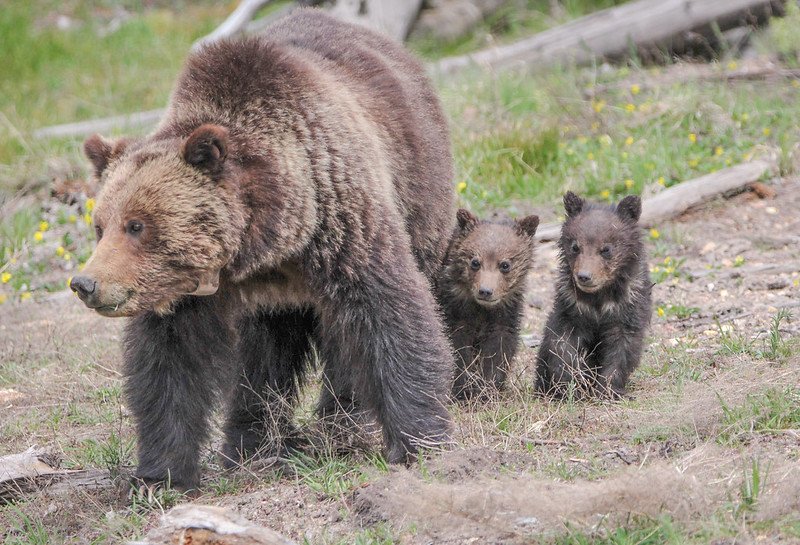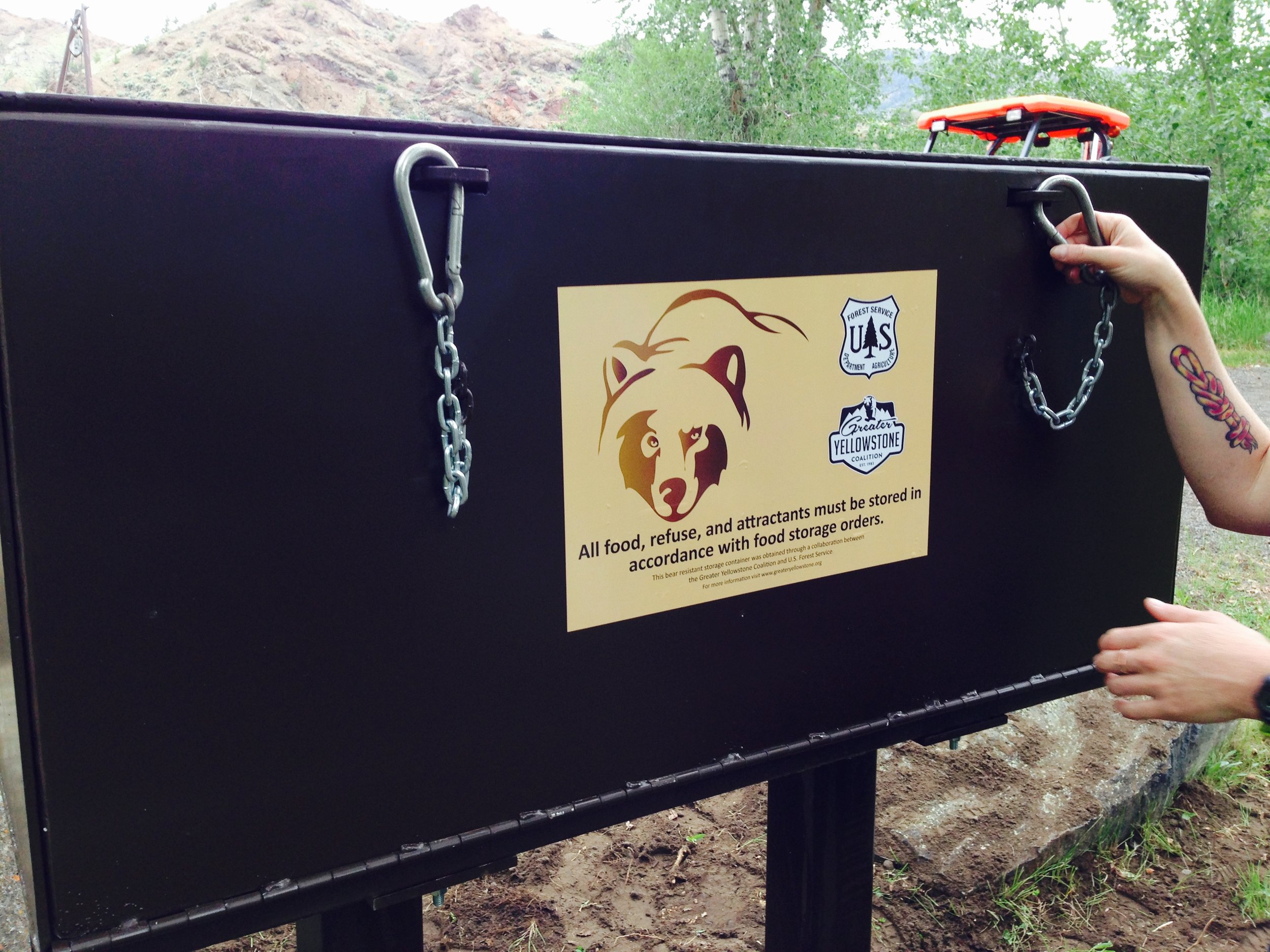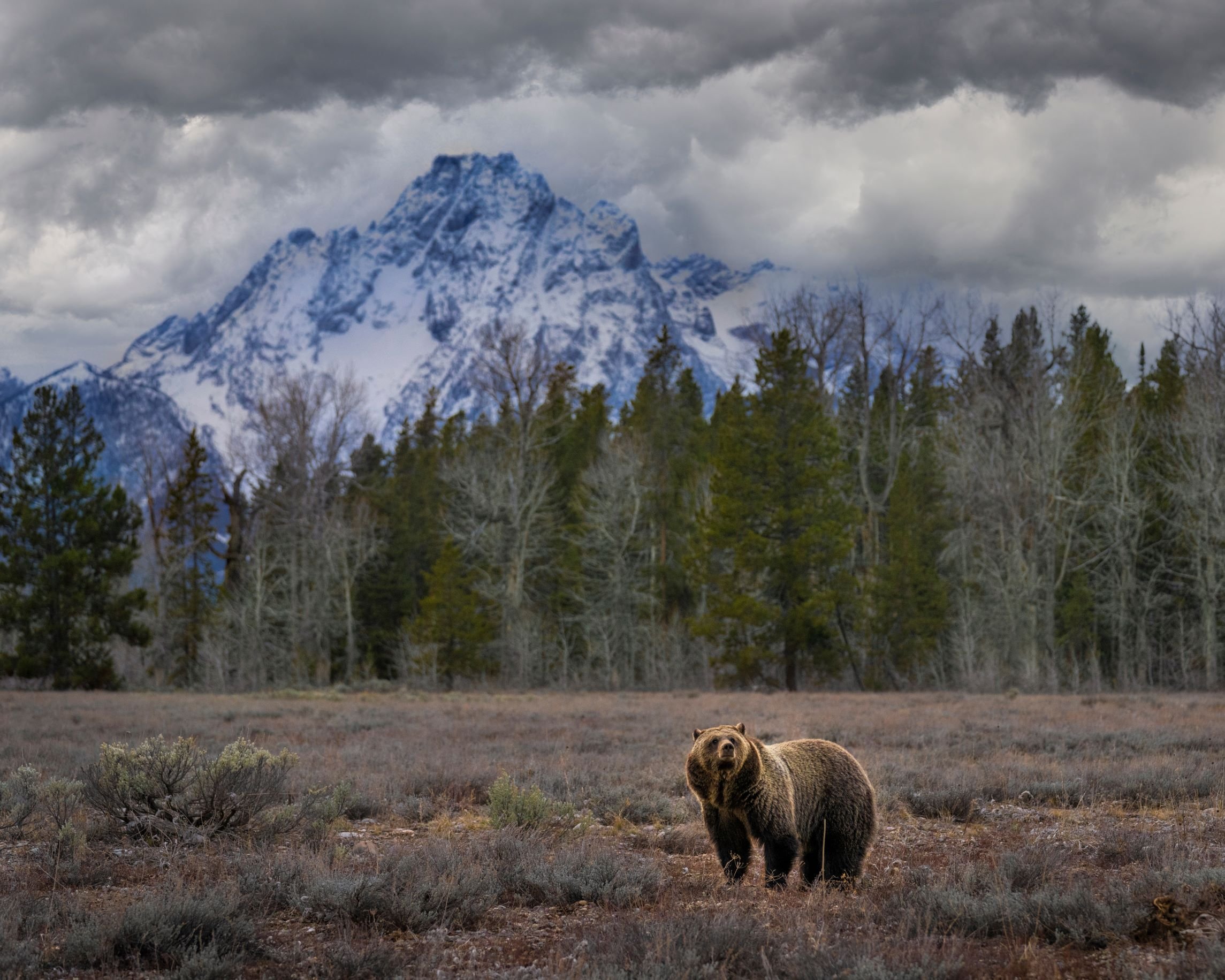
Bear-Proofing Greater Yellowstone’s Campgrounds
There is perhaps no more powerful symbol of the wild, untamed nature of Greater Yellowstone than the grizzly bear.
Yellowstone grizzlies were once on the brink of extinction, with fewer than 200 of them left in the ecosystem by the mid 1970s. Today, after decades of hard work to restore this magnificent species, over 1,000 grizzlies inhabit Greater Yellowstone. Grizzly bears can be found throughout the ecosystem, including within each of the five national forests surrounding Yellowstone National Park.
The restoration of the Yellowstone grizzly bear is a remarkable conservation success story. But bears’ expansion back into more of their historic range comes with challenges for both bears and people. In the mid 2000s, the expanding grizzly population brought bears back into parts of their historic range where they had not been seen for decades. With more people also living in – and visiting – the region, human-bear conflicts began to grow. These conflicts threaten human safety and put the lives of grizzlies at risk.
In national forest campgrounds across the Greater Yellowstone Ecosystem, grizzly bears were drawn to unsecured food and other attractants, leading to animals becoming habituated to human food sources and, at times, aggressive in their pursuit of them – a risky situation for campers and recreators in the ecosystem. Four separate, deadly grizzly bear encounters within a short span of time made it clear that human safety considerations needed to be prioritized alongside grizzly bear conservation.
Both the U.S. Forest Service and the Greater Yellowstone Coalition recognized that food storage challenges in national forest campgrounds were creating conflict hot spots. Without enough places for campers to securely store their food and trash, bears were being increasingly drawn to campgrounds.

To solve this problem, GYC and the Forest Service joined forces for an ambitious project to bear-proof over 100 priority campgrounds across the ecosystem.
The infrastructure improvements made by this program included the construction and development of new gates, kiosks, and educational signage, as well as the installation of bear-resistant food storage boxes and bear-resistant dumpsters in each campground.
With the generous support of GYC donors, the Greater Yellowstone Coalition raised more than $500,000 to fund these improvements and reduce grizzly bear conflict. This contribution, combined with matching grants and Forest Service funding, brought the total amount for the project to more than $1 million.
Over the five-year duration of the project, infrastructure was upgraded across 104 campgrounds, including the installation of more than 1,200 bear-resistant food storage and trash containers.
Today, the millions of visitors who camp in Greater Yellowstone’s national forest campgrounds can sleep a bit more soundly knowing that their campgrounds are designed to help keep bears wild and people safe. Innovative partnerships and conflict-reduction work continue to be central to our efforts to achieve a healthy, connected grizzly bear population now and into the future.
Read more on our grizzly bear conservation work.





